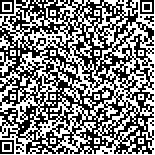Archive > Volume 44 Issue 6 > 2018,44(6):814-824. DOI:10.7519/j.issn.1000-0526.2018.06.009 Prev Next
Study of Convective Cloud Identification Based on H2O/IRW Observation
- Article
- Figures
- Metrics
- Preview PDF
- Reference
- Related
- Cited by
- Materials
Abstract:
Satellite observation and radiation transfer analysis have proved that the infrared water vapor of convective cloud cluster and window band brightness temperature difference (BTD)(H2O, IRW) have significant features, which means BTD can be used to identify the convection clouds. The global convection diagnostic (GCD) algorithm based on the BTD characteristics of convective cloud cluster, can detect convective cloud cluster by establishing a single BTD threshold, but it can not further quantify the intensity of convective clouds. Using FY2G VISSR infrared observations and CINRAD CAR radar observation data, we did the comparative study, and the results show that BTD/CAR has a good linear positive correlation, which shows BTD can be used not only to identify the presence of convective clouds, but also to further quantify the intensity of convective cloud cluster. The BTD is a factor for convective cloud recognition superior to the single IRW brightness temperature method. Based on the BTD/CAR relationship, radar echo intensity thresholds can be transferred into the corresponding BTD threshold. These BTD thresholds can be used to identify and differentiate intensity of convective cloud by using of geostationary satellite infrared water vapor and window band observation.
Keywords:
Project Supported:
Clc Number:


Mobile website









